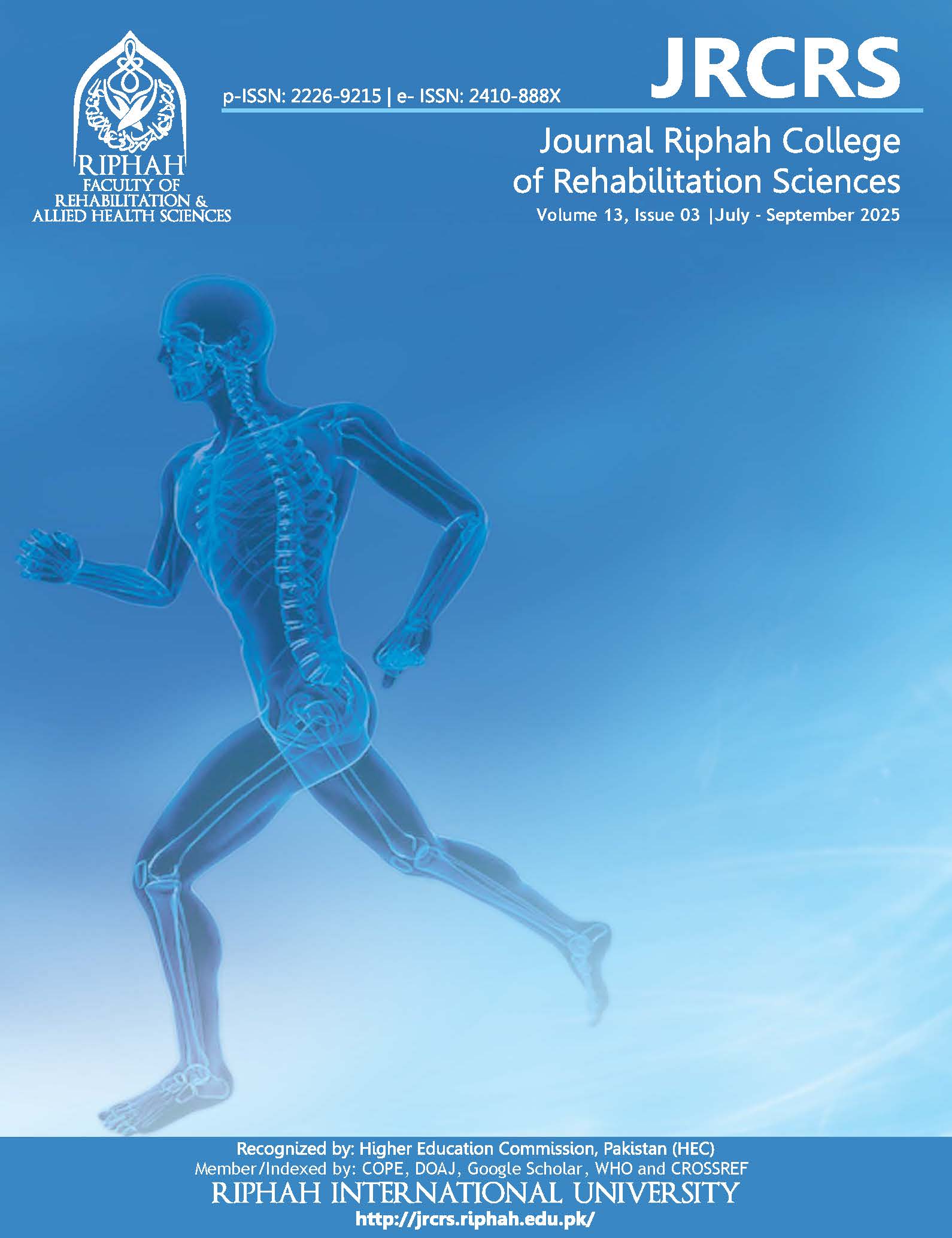Knee Joint Proprioception in Weight Bearing and Non-Weight Bearing Position in Arthroscopic Assisted Anterior Cruciate Ligament Reconstruction: A Cross-Sectional Study
Abstract
Abstract:
Background: Proprioception is the body's ability of sensing the position, movement, and alignment of its joints and limbs. The ACL is rich in proprioceptive fibers, an injury to this ligament, impairs knee function and neuromuscular control, leading to poor coordination. Incorporating proprioception assessment and training in ACL rehabilitation is essential for restoring function and preventing future injuries.
Objective: To determine knee joint proprioception in loaded and unloaded position among patients after arthroscopically assisted anterior cruciate ligament (ACL) reconstruction.
Methodology: A descriptive cross-sectional study was conducted at Ghurki Trust and Teaching Hospital (GTTH), targeting patients who had undergone surgical reconstruction of anterior cruciate ligament. The total study duration was six months, covering the period from June 2023 to December 2023. Using a non-probability purposive sampling technique, a total of 74 participants meeting the inclusion criteria were selected. A goniometer was utilized to evaluate joint position sense in both loaded and unloaded positions. The data was entered and analyzed using SPSS version 22.
Results: The result showed that the mean age of participants was 27.79 ± 5.03. Knee flexion in weight bearing position was 30 degrees and maximum range was 44 degree with mean of 34.89 ± 4.21 whereas minimum knee flexion in non-weight bearing was 30 degree and maximum was 45 degree with mean of 33.68 ± 4.35.
Conclusion: Statistically significant difference was found in knee joint proprioception between loaded and unloaded position among patient of ACL reconstruction.
Keywords: Anterior Cruciate Ligament, Knee Joint, Proprioception, Weight-Bearing
Downloads
Published
How to Cite
Issue
Section
License
Copyright (c) 2025 All Articles are made available under a Creative Commons "Attribution-NonCommercial 4.0 International" license. (https://creativecommons.org/licenses/by-nc/4.0/). Copyrights on any open access article published by Journal Riphah college of Rehabilitation Science (JRCRS) are retained by the author(s). Authors retain the rights of free downloading/unlimited e-print of full text and sharing/disseminating the article without any restriction, by any means; provided the article is correctly cited. JRCRS does not allow commercial use of the articles published. All articles published represent the view of the authors and do not reflect the official policy of JRCRS.

This work is licensed under a Creative Commons Attribution-NonCommercial 4.0 International License.







